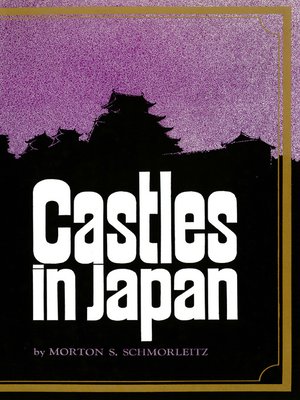
Sign up to save your library
With an OverDrive account, you can save your favorite libraries for at-a-glance information about availability. Find out more about OverDrive accounts.
Find this title in Libby, the library reading app by OverDrive.



Search for a digital library with this title
Title found at these libraries:
| Library Name | Distance |
|---|---|
| Loading... |
Behind the glossy facade of modern Japan there survive remnants—some of them surprisingly well preserved—of the country's feudal past, of warlords and fighting samurai, of shoguns and sequestered emperors, of princes and peasants. This book vividly presents the castles of Japan, more than 80 of them altogether, ranging geographically from Matsumae on the northern island of Hakkaido to Kagoshima in southern Kyushu
The author brings not only an immense knowledge but also a deep feeling for Japan and things Japanese to this sensitive study, formed from both the historian's and the sightseer's perspectives. Most of the Japanese castles, he explains, were built in several amazing decades at the end of the 16th century. The Tokugawa shogunate was then consolidating its power and local lords were girding themselves for the onslaughts of enemies supplied with that recent acquisition fro the West—firearms.
Castle architecture, among the most original of Japanese architectural forms, manifested a diabolically shrewd defense capability. An unwary enemy, if unwary he were, might charge into a veritable chamber of horrors—stone–dropping chutes, hidden gates, sharply–curved passageways, flooded moats, trap doors, and floor boards that squeaked to warn of an intruder's arrival. In Japanese style, many even contained special suicide courts.
The author brings not only an immense knowledge but also a deep feeling for Japan and things Japanese to this sensitive study, formed from both the historian's and the sightseer's perspectives. Most of the Japanese castles, he explains, were built in several amazing decades at the end of the 16th century. The Tokugawa shogunate was then consolidating its power and local lords were girding themselves for the onslaughts of enemies supplied with that recent acquisition fro the West—firearms.
Castle architecture, among the most original of Japanese architectural forms, manifested a diabolically shrewd defense capability. An unwary enemy, if unwary he were, might charge into a veritable chamber of horrors—stone–dropping chutes, hidden gates, sharply–curved passageways, flooded moats, trap doors, and floor boards that squeaked to warn of an intruder's arrival. In Japanese style, many even contained special suicide courts.







